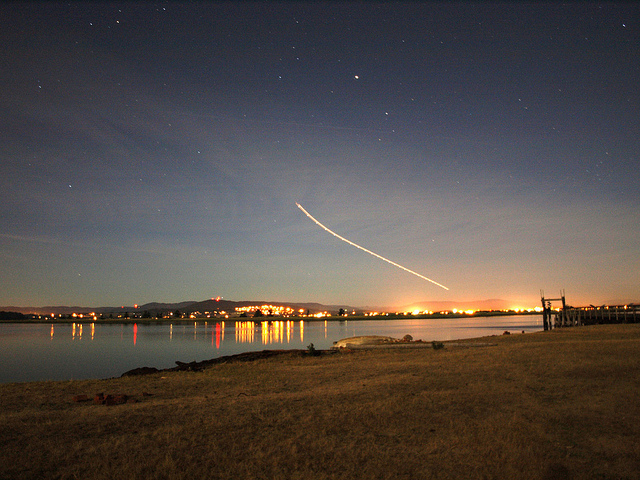
SIDNEY, B.C. — The passenger ferry departs the pier at the north end of Beacon Avenue in Sidney, B.C., bound for the long, thin sandbar that marks Sidney Spit.
The voyage on board the 15-metre catamaran to the Victoria-area community takes about 25 minutes and transports visitors to a vehicle-free oasis that is a nature-filled getaway from crowded city streets.
Sidney Spit, with tidal flats, sandy beaches, salt marshes and rolling meadows, is part of British Columbia’s Gulf Islands National Park Reserve, a protected marine ecosystem that encompasses 15 islands over 36 square kilometres.
The spit is a hook-like sandbar on the northern tip of Sidney Island, east of Vancouver Island.
A stroll at low tide along the sandbar, with its tear-shaped end, takes about 30 minutes.
“Sidney Spit is one of 11 backcountry style campgrounds we have that are accessible by water,” says Breanna Rice, a Parks Canada spokeswoman at the Gulf Islands Reserve.
Many people arrive by the 40-passenger ferry or take their own boats, mooring at the Parks Canada dock or anchoring just offshore.
It is the ideal place for a day trip to explore the island’s beaches, meadows and trails or to spend the weekend at an oceanfront campout, Rice says. There are 29 walk-in camp sites and most have an ocean view.
“For a lot of people it could be their first introduction to feeling like they are in the backcountry and totally getting away from everything. Once you are there, if you take the ferry over, you are really there for the night.”
There are no vehicles on the 400-hectare Sidney Island and the Sidney Spit area is dotted with hiking trails that lead around the island and to a lagoon, Rice says. The beaches are scenic and offer peaceful walking areas.
A Parks Canada naturalist is stationed at Sidney Spit to point out the unique grasses and plants native to one of Canada’s southern-most locations. Rice says recent efforts to remove invasive plants have allowed the native species of plants and flowers to flourish again.
The Sidney Spit area is also a bird watcher’s paradise, Rice says. The habitat is ideal for shorebirds, and because it’s part of the Pacific Flyway, Sidney Spit is a major resting and feeding stop for many birds.
Large flocks of Brant geese use the park in March and April. During July and August, hundreds of Rhinoceros auklets and Heermann’s gulls can been seen there.
Rice says the common nighthawk builds its nests on the ground, which is one reason dogs must be on leashes at all times at Sidney Spit.
The park’s forest and upland meadows are populated with fallow deer, Rice says, adding the area’s Indigenous peoples are permitted to hunt deer for food during the winter months when the park is closed to the public. The island’s deer population is plentiful and can withstand an annual hunt, she says.
The ferry operates six days a week, with its first trip to Sidney Spit at 10 a.m., and its last return voyage at 4:30 p.m., Monday to Thursday. On Fridays and Saturdays, the ferry makes its final sailing from Sidney Spit at 6 p.m.
The ferry costs $19 for adults, round trip, and $16 for children and seniors.
Camping sites for $17.60 per night are available online at www.reservation.parkscanada.gc.ca or by calling Parks Canada at 1-877-737-3783